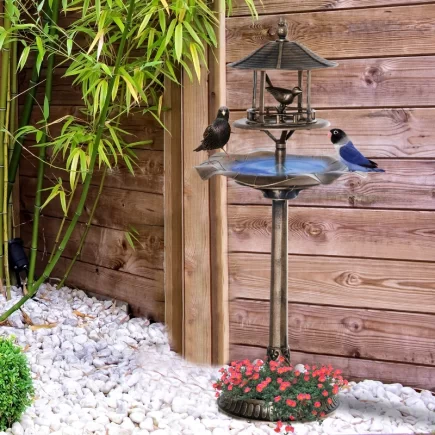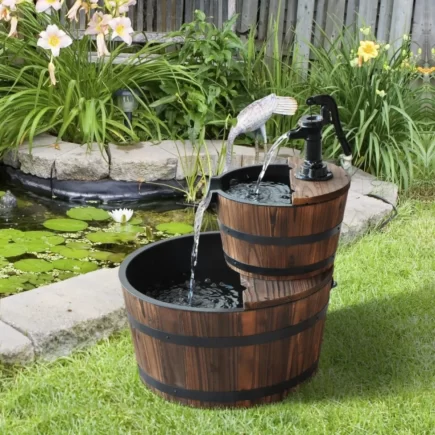Keeping your bathroom vanity clean is essential for maintaining a tidy, functional, and pleasant space. Over time, bathroom vanities can accumulate grime, soap scum, water stains, and dust. A clean vanity not only enhances the aesthetic appeal of your bathroom but also prolongs the life of your fixtures and surfaces.

In this article, we’ll provide you with a step-by-step process for cleaning your bathroom vanity, ensuring it looks brand new with minimal effort. We’ll also discuss the best cleaning supplies to use for various surfaces.
Step-by-Step Process of Cleaning Bathroom Vanity
Step 1: Gather Your Cleaning Supplies
Before starting, it’s important to gather all the necessary cleaning products and tools. Having everything ready at hand will make the job quicker and more efficient. Here’s a list of basic cleaning supplies you’ll need:
| Cleaning Supply | Purpose |
| Mild dish soap or all-purpose cleaner | For cleaning vanity surfaces and removing light stains. |
| Microfiber cloths or soft rags | For wiping down surfaces without leaving lint or residue. |
| Vinegar | For removing tough stains, soap scum, water spots, and odors. |
| Baking soda | For spot cleaning sticky residues and tough stains. |
| Warm water | To dilute cleaning products and rinse areas thoroughly. |
| Wood polish (for wooden vanities) | To maintain shine and protect the surface of wooden vanities. |
| Sponge or soft-bristled brush | For scrubbing stubborn stains or grime from hard-to-reach areas. |
| Rubber gloves (optional) | To protect your hands from harsh cleaning chemicals. |

Step 2: Empty the Vanity
Start by removing all the items inside your bathroom vanity. This not only gives you easier access to all surfaces but also gives you a chance to reorganize and declutter.
Use this moment to check for expired products or items that are no longer needed, which can free up space and make cleaning easier.
Step 3: Dust the Exterior and Interior
Dusting is an important first step to ensure you remove all loose particles before moving to deeper cleaning.
Use a dry microfiber cloth to gently wipe down both the interior and exterior of the vanity. Always start at the top and work your way down, as dust naturally falls. Dusting first helps avoid smudging or spreading dirt when cleaning other areas.
Step 4: Clean the Inside of the Vanity
Next, it’s time to clean the inside of the vanity. Use a damp microfiber cloth with a mild soap solution to wipe the shelves, inside surfaces, and any drawers. If your vanity is made of wood, be cautious not to soak the wood with too much water. Instead, dampen the cloth slightly and dry the surface immediately after cleaning to prevent water damage.

Step 5: Clean the Vanity Doors
The vanity doors often collect the most grime, soap scum, and fingerprints. Use a cloth dampened with a mild soap and water solution to clean the front and back of the vanity doors. Ensure you wipe thoroughly to remove smudges and soap residue.

For wooden vanities, use a wood-safe cleaner or wood polish to preserve the finish and protect it from water damage. Avoid water-based cleaners, as these can harm the finish of the wood over time.
Step 6: Clean the Handles and Knobs
Handles and knobs tend to gather oils and dirt from regular use, which can make them look dingy and unattractive. Clean these by wiping them with a damp cloth soaked in soapy water. For metal knobs, you can use a vinegar-water solution or a metal cleaner to remove tarnish and restore their shine.

Step 7: Remove Soap Scum and Water Spots
Soap scum and water spots are common in bathrooms, especially in humid areas. To remove them from your bathroom vanity, mix equal parts vinegar and water in a spray bottle. Spray the mixture onto the affected areas and let it sit for a few minutes before wiping it off with a clean cloth.
For stubborn spots, sprinkle a little baking soda on the dampened area. Use a soft sponge to gently scrub the surface. Baking soda’s mild abrasiveness helps lift stains without damaging the finish of your vanity.
Step 8: Dry the Vanity Thoroughly
Once all areas of the vanity have been cleaned, dry them thoroughly with a dry microfiber cloth. This is especially important for avoiding water spots, particularly on glossy surfaces. Make sure both the inside and outside of the vanity are fully dried to prevent moisture buildup, which could lead to mold or mildew.

Step 9: Apply a Protective Finish (for Wooden Vanities)
For wooden vanities, applying a wood polish or wax after cleaning is an excellent way to maintain its natural shine and protect it from moisture. Follow the manufacturer’s instructions for applying the polish.
Generally, you should use only a thin layer, as over-applying can make the surface look greasy or attract dust.
Remove Mildew or Mold from Bathroom Vanities
In bathrooms with high humidity, mildew or mold can form in dark, damp areas of your vanity. To remove mold or mildew, mix equal parts water and vinegar in a spray bottle or use a mold-specific cleaner. Apply the solution to the affected areas and gently scrub with a sponge.
Keep Your Bathroom Vanity Fresh and Long-Lasting
Cleaning your Bathroom Vanity is a simple yet effective way to maintain both the functionality and aesthetics of your bathroom. By following the steps outlined above and using the right cleaning supplies, you can keep your vanity looking spotless and fresh.
Regular cleaning not only enhances the visual appeal of your space but also ensures that your vanity and bathroom fixtures last longer. Whether you have a freestanding vanity, a modern floating vanity, or any other type, these cleaning tips will keep your bathroom in pristine condition for years to come.
FAQs
1. What should I do if my vanity surface becomes cloudy after cleaning?
This often happens when cleaners leave behind residue. Rinse the area with warm water and wipe with a dry microfiber cloth to restore shine.
2. How do I prevent cleaning products from damaging wooden vanities?
Always dilute cleaners and avoid leaving excess moisture on wood. Finish by drying thoroughly and applying a wood polish occasionally to protect the surface.
3. How do I protect painted vanity surfaces from chipping during cleaning?
Use only mild cleaners and soft cloths. Avoid abrasive pads, and always blot instead of scrubbing harshly to keep the painted finish intact.




























